
Many aspiring Korean learners are plagued by a common question: How long does it take to learn Korean?
Unfortunately, there’s no definite answer. It really depends on a number of factors, such as your native language, education, experience with languages, exposure, and motivation.
Your intended proficiency level also plays a role in determining how long it takes to learn the Korean language. Do you want to be able to…
- …read simple Korean words?
- …hold a conversation with locals?
- …work in South Korea?
Each of these goals requires a different skillset and time commitment, so keep this in mind before taking the leap and beginning your studies.
In this article, you’ll learn how to estimate how long it will take you to learn the Korean language based on your background and the proficiency level you have in mind. As a reference point, we’ll be using standards from the TOPIK proficiency test.
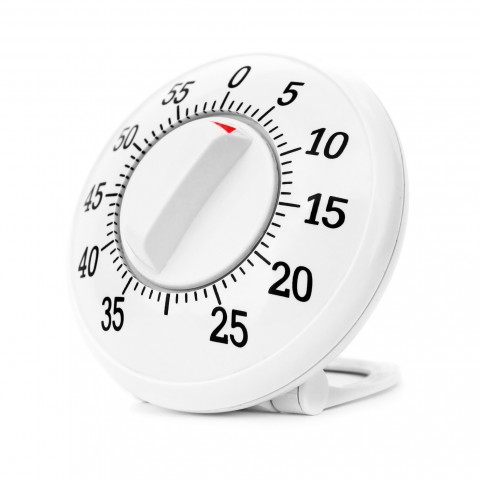
Mastering the Korean language takes time and effort.
 Table of Contents
Table of Contents
- The Many Factors That May Impact Your Studies
- TOPIK Beginner’s Level
- TOPIK’s Intermediate Level
- TOPIK’s Advanced Level
- How KoreanClass101 Can Help You Reach Your Goals
The Many Factors That May Impact Your Studies
Before we jump right into how long it takes to reach each level, there are a few factors you need to keep in mind.
Your Native Language vs. Korean
Thanks to King Sejong, you don’t need to learn all the complicated Chinese characters to learn Korean! But you do need to understand that Koreans use Sino-Korean vocabulary, which refers to Korean words of Chinese origin and words directly borrowed from the Chinese language. For this reason, if your first language is Chinese or Japanese (Kanji), you’ll get the hang of Sino-Korean vocabulary a lot faster than speakers of other languages will.
Your Language Learning Experience
If you already speak a foreign language or have been raised in a bilingual (or even a trilingual) environment, you’ll save so much time! It’s usually faster to pick up a third or fourth language than it is to learn a second language. A new study from the University of Haifa revealed that bilinguals can pick up a third language more effectively than monolinguals can a second language. This is because bilinguals have already developed an aptitude for language learning.
Your Motivation and Attitude
Whether you want to learn the Korean language to understand the lyrics of your favorite K-pop songs or because you want to work in South Korea, your motivation and attitude toward learning Korean will significantly affect how quickly you pick up the language.
Learning Methods
Are you planning to study Korean casually on your own? Or are you already in a Korean-speaking country and fully immersed in the language? Maybe you want to go to a language school or learn online? There are many different learning methods out there, so make sure you choose the one that suits you best.

Little by little, you’ll reach the level you want.
TOPIK Beginner’s Level
Reaching the beginner level of Korean is a huge milestone and a victory that will propel you forward in your studies. But how long does this usually take?
The TOPIK test ranks beginners as either Level 1 or Level 2, depending on how well they score. Here’s what each level means:
Level 1
Level 2
|
At this level, you’ll have a very limited vocabulary but can participate in greetings or short talks about your day. It will take about three to six months to reach the beginner level, depending on your study schedule. At this point, it’s important to master Korean spelling and to build a strong fundamental grammar foundation. Without this foundation in place, it will be challenging for you to move forward.
The perfect way to study at this stage is to write each Korean character down on a piece of paper several times until you have each one memorized. To start, you can download free PDF materials from KoreanClass101.com on the page Learn the Korean Alphabet, Hangul, from A to Z!
Once you’ve familiarized yourself with the Korean characters, move on to learning the basic Korean grammar rules. After that, I recommend you learn basic phrases for introducing yourself, greeting people, and even ordering food at a restaurant! KoreanClass101.com has you covered with the following lesson series:
- All About (15 Lessons • 1hr 54min)
- Absolute Beginner Season 1 (25 Lessons • 5hrs 1min)
- Listening Comprehension for Absolute Beginners (25 Lessons • 40min)
- Absolute Beginner Korean for Every Day (64 Lessons • 6hrs 20min)
Learning basic Korean grammar principles will help you build your vocabulary skills, too. Check out the pages below if you want to speed up your studies and learn the most important and commonly used words.
- Korean Core 100 Word List
- Korean Word of the Day
- Free Vocabulary Lists
- Korean words and phrases (Wikipedia)
At this level, flashcards will be your best friends! We recommend you check out a few different apps that provide a flashcard function.
If you’re struggling to understand the rules of grammar or anything related to the Korean language, ask around. Our Korean forum is a great place to ask questions to other Korean students as well as native Korean speakers.
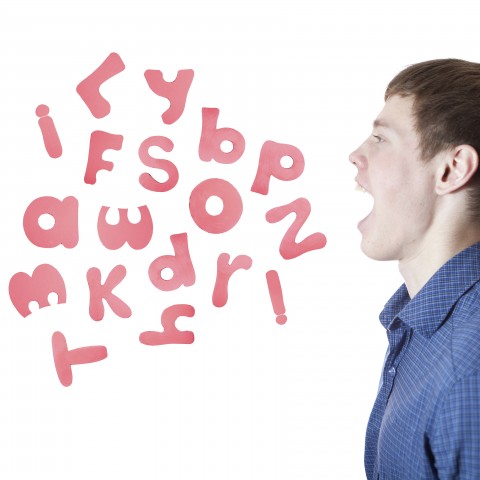
The more you practice the Korean language, the faster you will reach the level you want!
TOPIK’s Intermediate Level
Your next milestone will be to reach the intermediate level of Korean. But what exactly does this look like, and how long will it take to get there? The TOPIK test has two intermediate level rankings: Level 3 and Level 4.
Level 3
Level 4
|
It can take anywhere from one to two years to reach Level 3, which equates to about 600 hours of studying.
At this level, you have familiarized yourself with Korean spelling and basic Korean grammar concepts. You also have the ability to hold short conversations and exchanges, such as greeting someone or buying items. Here are some KoreanClass101 lesson series you can study in conjunction with your textbooks:
- Daily Conversation: Lower Intermediate Korean (50 Lessons • 14hrs 37min)
- An Intermediate Korean Lesson Review (73 Lessons • 10hrs 22min)
- Intermediate Season 1 (25 Lessons • 7hrs 42min)
- Intermediate Season 2 (25 Lessons • 5hrs 11min)
In order to achieve Level 4, you should be willing to dedicate 2 to 4 years (or about 1,000 hours) of studying. The great news is that once you reach this level, you can start learning more complex grammar rules and a variety of verb conjugations used in advanced contexts.
If you’re studying on your own, this would be a good time to get at least a few hours of private lessons or online coaching to solidify your knowledge and make sure you’re on the right track. Also, watching Korean dramas, films, or even news stations is a great way to level up your Korean language skills. Here are a few more Korean resources you can check out on KoreanClass101.com:
- Listening Comprehension for Intermediate Learners (20 Lessons • 57min)
- Reading Comprehension for Intermediate Learners (10 Lessons • 15min)
- Upper Intermediate Season 1 (25 Lessons • 6hrs 46min)
This is only a snapshot of what we have to offer our learners. When you have time, explore our site to get an even better idea of how we can help you reach the intermediate level and beyond!

TOPIK’s Advanced Level
Are you shooting for the stars and hoping to attain an advanced level of Korean? Good for you—we know you can do it. But how long does it take to learn Korean fluently?
Level 5
Level 6
|
At this stage, you can use Korean fluently and accurately in academic or professional contexts.
If you want to achieve this level, be prepared. It will take at least a few years, though just how quickly you learn depends on you and your methods for studying. Nevertheless, expect to spend about 1,500 hours or more to get to this level.
Start watching Korean movies without subtitles, reading books, listening to Korean music, and most importantly, find native speakers you can interact with regularly. At this point, living in South Korea is the best option because you’ll get a massive dose of real-life Korean every day. You’ll constantly be introduced to new accents, slang terms, and idiomatic expressions you wouldn’t find in grammar books.
Here are some additional study materials for you as you progress from intermediate to advanced:
- Conversation Starters for Advanced Listeners (12 Lessons • 1hr 4min)
- Listening Comprehension for Advanced Learners (20 Lessons • 1hr 10min)
- Advanced Audio Blog 1 (30 Lessons • 1hr 33min)
- Advanced Season 1 (12 Lessons • 3hrs 22min)

How KoreanClass101 Can Help You Reach Your Goals
In this article, you learned how long it takes to learn Korean for each proficiency level, reviewed the many factors involved in calculating those numbers, and received some advice on how to learn Korean effectively at each stage. Feel free to let us know in the comments if you have any questions on what we covered today!
For many students, the ability to study Korean anywhere and anytime is a major factor in how motivated they are and how quickly they learn. Online classes are the best option in this regard, because they’re usually suitable for any level and are more affordable than attending school or paying for private lessons. There are plenty of free language learning websites that allow you to study from home at your own pace—so why choose KoreanClass101.com?
We make learning both fun and effective through proven teaching methods, and we cater our lessons to learners at each level. Even without a paid subscription, you can access tons of free Korean study materials:
- Vocabulary lists
- Video and audio lessons
- Podcasts
- Our YouTube channel
We also provide the option to upgrade to a Premium or Premium PLUS account for even more learning materials, exclusive content, and additional benefits. For example, Premium PLUS members can get one-on-one coaching with their own private tutor through MyTeacher.
Happy Korean learning! You can do this. 😉

The 11 Most Well-Known Korean Proverbs

Learning Korean proverbs is not only a great way to study the language, but also a window to the unique Korean culture. To help you get the most out of your language studies, we’ve put together this useful Korean proverbs list for you to study. Who knows—you may find that you can start applying these words of wisdom to your own life!
 Table of Contents
Table of Contents
- 꿩 먹고 알 먹는다 (kkwong meokgo al meongneunda)
- 보기 좋은 떡이 먹기도 좋다 (bogi joeun tteogi meokgido jota)
- 로마는 하루아침에 이루어진 것이 아니다 (romaneun haruachime irueojin geosi anida)
- 낮말은 새가 듣고 밤말은 쥐가 듣는다 (nanmareun saega deutgo bammareun jwiga deunneunda)
- 세 살 버릇 여든까지 간다 (se sal beoleus yeodeunkkaji ganda)
- 말 한마디에 천냥 빚도 갚는다 (mal hanmadie cheonnyang bijdo gapneunda)
- 궁하면 통한다 (gunghamyeon tonghanda)
- 뜻이 있는 곳에 길이 있다 (tteusi inneun gose giri itda)
- 병 주고 약 준다 (byeong jugo yak junda)
- 원숭이도 나무에서 떨어질 때가 있다 (wonsungido namueseo tteoreojil ttaega itda)
- 옷이 날개다 (osi nalgaeda)
- Want to Learn More? KoreanClass101 Can Help!
1. 꿩 먹고 알 먹는다 (kkwong meokgo al meongneunda)
Vocabulary List:
Literal Translation: Eat a pheasant and eat its egg.
Close English Proverb: Kill two birds with one stone.
This phrase is used to describe a situation where you do one action and receive two benefits at the same time.
For example, imagine that you finally decide to stop smoking to improve your health. You could use this phrase to emphasize that you would not only become healthier than before, but also spend less money on hospital visits and insurance.
Another example would be if you were cleaning your house and found a stack of money that you had completely forgotten about. In that case, you might say:
꿩 먹고 알도 먹고! 방 청소하다가 돈 찾았어.
Kkwong meokgo aldo meokgo! Bang cheongsohadaga don chajasseo.
“Kill two birds with one stone! I found some money while cleaning the house.”

2. 보기 좋은 떡이 먹기도 좋다 (bogi joeun tteogi meokgido jota)
Vocabulary List:
- 보기 (bogi) – “to see”
- 좋은 (joeun) – “and to be good”
- 떡 (tteok) – “rice cake”
- 먹기도 (meokgido) – “and to eat”
- 좋다 (jota) – “good”
Literal Translation: Good looking tteok (rice cake) tastes good too.
Close English Proverb: What looks good also tastes good.
When you see something that looks good, it will likely be of good quality. This is because the nice appearance shows that someone put a lot of effort into it.
Example:
민수: 이 책, 내용이 주제별로 잘 분류되어 있고 사진의 질도 참 좋네.
Minsu: I chaek, naeyongi jujebyeollo jal bunryudoeeo itgo sajinui jildo cham jonne.
Minsu: “The contents of this book are well-organized by topic, and the quality of the photos is great.”
철수: 보기 좋은 떡이 먹기도 좋다는데, 한번 읽어봐.
Cheolsu: Bogi joeun tteogi meokgido jotaneunde, hanbeon ilgeobwa.
Cheolsu: “What looks good is usually good too, so read it.”
3. 로마는 하루아침에 이루어진 것이 아니다 (romaneun haruachime irueojin geosi anida)
Vocabulary List:
- 로마 (roma) – “Roma”
- 하루아침 (haruachim) – “one morning”
- 이루어지다 (irueojida) – “be achieved”
Literal Translation: Rome wasn’t made in one morning.
Close English Proverb: Rome wasn’t built in a day.
This Korean proverb is used to remind us that we cannot expect to do important tasks really quickly, because quality work takes time. For example, it takes time and effort to become 몸짱 (momzzang), meaning someone with muscle.
Example:
민수: 나 헬스클럽 등록했어. 몸짱 빨리 되고 싶다.
Minsu: Na helseukeulleop deungnokaesseo. Momjjang ppalli doego sipda.
Minsu: “I registered for a health club. I want to gain muscle quickly.”
철수: 로마는 하루아침에 이루어진 것이 아닌건 알지?
Cheolsu: Romaneun haruachime irueojin geosi aningeon alji?maneun haluachim-e ilueojin geos-i aningeon alji?
Cheolsu: “You know that Rome didn’t happen overnight, right?”
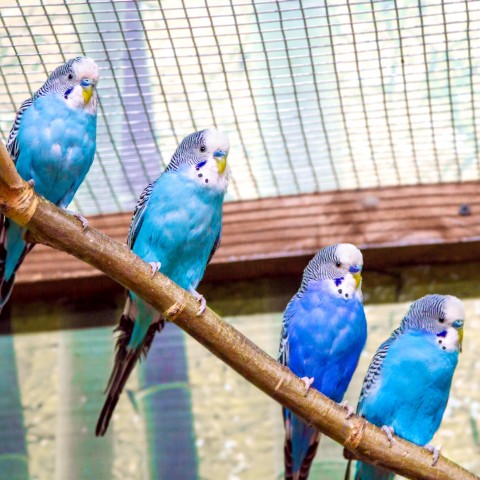
4. 낮말은 새가 듣고 밤말은 쥐가 듣는다 (nanmareun saega deutgo bammareun jwiga deunneunda)
Vocabulary List:
- 낮말 (nanmal) – “words spoken during daytime”
- 새 (sae) – “bird”
- 밤말 (bammal) – “words spoken during nighttime”
- 쥐 (jwi) – “mouse”
- 듣는다 (deutneunda) – “listens”
Literal Translation: “Birds hear the words spoken in the day, and mice hear the words spoken at night.”
Close English Proverb: The walls have ears.
This proverb means that no matter how secretly you say something, others are likely to hear. If you know someone who spreads rumors or says bad things about others, you should step in and quote this Korean proverb.
Example:
민수: 너 내가 없을때 나에 대해 나쁜 얘기 했다면서?
Minsu: Neo naega eopseulttae nae daehae nappeun yaegi haetdamyeonseo?
Minsu: “You said bad things about me when I wasn’t there?”
철수: 아니 그런적 없는데?
Cheolsu: Ani geureonjeok eomneunde?
Chulsoo: “No, I didn’t.”
민수: 낮말은 새가 듣고 밤말은 쥐가 듣는다고, 너 말 조심하고 다녀.
Minsu: Nanmareun saega deutgo bammareun jwiga deunneundago, neo mal josimhago danyeo.
Minsu: “Birds listen during the day, and rats listen during the night. Watch your mouth.”
5. 세 살 버릇 여든까지 간다 (se sal beoleus yeodeunkkaji ganda)
Vocabulary List:
- 세 살 (se sal) – “3 years old”
- 버릇 (beoreut) – “habit” (usually bad habits)
- 여든 (yeodeun) – “80 years old”
- 까지 (kkaji) – “until”
- 간다 (ganda) – “to go”
Literal Translation: Habits (learned) at three last until one is eighty.
Close English Proverb: What’s learned in the cradle is carried to the grave.
This wise Korean proverb is used to warn that bad habits should be corrected early in life, since they’re very difficult to correct later in life. You could say this, for instance, when somebody keeps repeating the same mistakes.
Example:
민수: 세 살 버릇 여든까지 간다는 말 몰라? 그 버릇 때문에 힘들어질걸?
Minsu: Se sal beoreut yeodeunkkaji gandaneun mal molla? Geu beoreut ttaemune himdeureojilgeol?
Minsu: “Don’t you know the saying that 3-year-old habits last until you’re 80? You’re going to suffer from that habit!”
6. 말 한마디에 천냥 빚도 갚는다 (mal hanmadie cheonnyang bijdo gapneunda)
Vocabulary List:
- 말 (mal) – “saying”
- 한마디 (hanmadi) – “a single word”
- 천 (cheon) – “a thousand”
- 냥: (nyang) – “an old unit of Korean coinage”
- 빚 (bit) – “a debt”
- 도 (do) – “also”
- 갚는다 (gamneunda) – “to pay back”
Literal Translation: One word can repay a thousand nyang (old Korean currency) debt.
Close English Proverb: A good tongue is a good weapon.
This proverb highlights the importance of how you speak to people. You could use this proverb in a situation where someone is trying to persuade another party to do something; it would emphasize the importance of choosing their words carefully.
Example:
말 한마디에 천냥 빚도 갚는다고, 항상 말 조심해야해.
mal hanmadie cheonnyang bijdo gapneundago, hangsang mal josimhaeyahae.
“A good tongue is a good weapon, so be careful what you say.”

7. 궁하면 통한다 (gunghamyeon tonghanda)
Vocabulary List:
- 궁하면 (gunghamyeon) – “if you need something”
- 통한다 (tonghanda) – “it will open up”
Literal Translation: If you need something, it will open up.
Close English Proverb: There is always a way out.
This is a proverb often used to motivate others to find an innovative solution to a problem that otherwise seems helpless. For example, if a friend of yours wanted to become a YouTuber, you could use this proverb to encourage them.
Example:
민수: 유튜버가 되고 싶다.
Minsu: Yutyubeoga doego sipda.
Minsu: “I want to be a YouTuber.”
철수: 궁하면 통한다고 한번 해봐!
Cheolsu: Gunghamyeon tonghandago hanbeon haebwa!
Chulsoo: “Try it, maybe it will work!”
8. 뜻이 있는 곳에 길이 있다 (tteusi inneun gose giri itda)
Vocabulary List:
Literal Translation: In the place there is a will, there is a way.
Close English Proverb: Where there’s a will, there’s a way.
You can use this Korean proverb exactly the same way you would use its English equivalent. It means that a person can achieve anything, despite the difficulties, if they want it bad enough.
Example:
민수: 저 직장 너무 갖고 싶다.
Minsu: Jeo jigjang neomu gatgo sipda.
Minsu: “I really want that job.”
철수: 뜻이 있는 곳에 길이 있다고 열심히 해봐!
Cheolsu: Tteusi itneun gose giri itdago yeolsimhi haebwa!
Chulsoo: “Try hard because where there’s a will, there’s a way!”
9. 병 주고 약 준다 (byeong jugo yak junda)
Vocabulary List:
Literal Translation: Give a disease then give medicine.
Close English Proverb: To make trouble and then give help.
This proverb describes the actions of a deceptive person, who first causes harm and then offers a remedy in order to appear like the rescuer.
Example:
철수: 콜록콜록
Cheolsu: kollogkollog
Chulsoo: coughing
수미: 야! 너 감기 걸렸어?
Sumi: Ya! neo gamgi geollyeoss-eo?
Sumi: “Hey! Do you have a cold?”
다음날 (daeumnal) – “Next day”
수미: 콜록콜록
Sumi: kollogkollog
Sumi: coughing
철수: 미안해, 이 약 먹고 빨리 나아.
Cheolsu: Mianhae, i yag meoggo ppalli naa.
Chulsoo: “Sorry, I hope you get better with this medicine.”
수미: 지금 병 주고 약 주냐?
Sumi: Jigeum byeong jugo yag junya?
Sumi: “Are you being nice or nasty?”

10. 원숭이도 나무에서 떨어질 때가 있다 (wonsungido namueseo tteoreojil ttaega itda)
Vocabulary List:
- 원숭이 (wonesungi) – “a monkey”
- 도 (do) – “also” / “too”
- 나무 (namu) – “a tree”
- 에서(eseo) – “from”
- 떨어질 때가 (tteoreojil ttaega) – There is a time when one falls~
- 있다 (itda) – “there is”
Literal Translation: Monkeys sometimes fall from trees.
Close English Proverb: Even Homer sometimes nods.
Use this phrase to emphasize that even an expert sometimes makes mistakes.
Example:
민수: 저 피겨스케이터 전세계 1위인데도 넘어질때가 있네.
Minsu: Jeo pigyeoseukeiteo jeonsegye irwiindedo neomeojilttaega itne.
Minsu: “Even though she is the number-one figure skater in the world, she sometimes falls too.”
철수: 원숭이도 나무에서 떨어질 때가 있잖아.
Cheolsu: Wonsungido namueseo tteoreojil ttaega itjana.
Chulsoo: “Even Homer sometimes nods.”
11. 옷이 날개다 (osi nalgaeda)
Vocabulary List:
- 옷 (ot) – “clothing”
- 날개 (nalgae) – “wing”
Literal Translation: Clothes are your wings.
Close English Proverb: Dress to impress.
This proverb emphasizes the importance of dressing well.
Example:
민수: 우와, 너 오늘따라 진짜 멋있어 보인다.
Minsu: Uwa, neo oneulttala jinjja meosisseo boinda.
Minsu: “Wow, you look really cool today.”
철수: 옷이 날개라고, 새로운 옷 좀 샀지.
Cheolsu: Osi nalgaerago, saeroun ot jom satji.
Chulsoo: “Dress to impress. I bought some new clothes.”

12. Want to Learn More? KoreanClass101 Can Help!
In this article, you learned several unique Korean proverbs as well as a few you may recognize from English. Memorizing these proverbs is a fun way to complement your Korean studies, because you can compare them with proverbs from your country. While some of them are difficult to understand, this gives you more reason to brush up on your knowledge of Korean culture!
If you want to learn more about Korean proverbs and other sayings, there are several pages on KoreanClass101.com (and elsewhere on the web) where you can find more proverbs. Feel free to check them out when you have time!
KoreanClass101:
- Do You Know These Korean Proverbs? (you’ll be surprised!) / YouTube
- Do You Know the Most Common Korean Proverbs? | Learn Basic Korean / YouTube
- Top 10 Quotes About Language Learning
- Top 10 Inspirational Quotes
Other:
Do you have any questions about the proverbs we’ve covered? If so, leave us a comment below and we’ll be glad to help!

10 Places to Visit in Seoul

Visiting Seoul can be an enchanting experience, but we all know how stressful planning a trip can be! If you have your heart set on exploring this unique South Korean city, then you’ve come to the right place. In this article, we’ll introduce you to the best places to visit in Seoul, provide some practical information about the country, and cover a handful of useful phrases you can use to converse with locals.

 Table of Contents
Table of Contents
- Before You Go…
- Must-See Places for a 1-3 Day Trip
- Highly Recommended Places for a 4-7 Day Trip (or Longer)
- Korean Survival Phrases for Travelers
- Want to Learn More Survival Phrases? No Problem!
Before You Go…
Here’s some basic information about South Korea you should know before you travel to Seoul:
- Language: Korean. (English is becoming increasingly common, as are Chinese and Japanese.)
- Currency: KRW (won)
- Electricity info: 220 volts (plugs have two round pins)
- Visa: Depending on where you’re from, you may or may not need to obtain a visa in advance. Some countries (including the United States, Australia, Hong Kong, Slovenia, and Japan) are allowed up to ninety days, while other countries have different policies. Check out the website of the Embassy of the Republic of Korea to see if you need to have a visa to enter South Korea.
- Payment methods: Most restaurants, cafes, shops, and even taxis accept credit cards. Because of this, most Koreans rarely carry cash.
- Average cost of a meal: While meal prices in South Korea can vary, the cheapest cost of food is about ₩2,500 (for a roll of Kimbap, for example). That said, the average cost of food in South Korea is about ₩29,301 per day.
- Technology: South Korea ranks among the most technologically advanced countries in the world. This creates plenty of benefits for travelers in the country, including access to free wifi just about everywhere: on the subway, in restaurants, in cafes, in public places, and so on.
Transportation: Transportation in South Korea is easy to use, as all of the signs and announcements are written and announced in multiple languages, including Korean, English, Chinese, and Japanese.

Must-See Places for a 1-3 Day Trip
Depending on how much time you have to visit this exciting city, you may need to prioritize your agenda to include the places and activities that matter most to you. If you’re on a tight schedule, then there are a few must-visit attractions in Seoul we highly recommend!
Day 1 in Seoul
경복궁 – “Gyeongbokgung Palace” (Google map)
경복궁 (gyeongbokgung), or “Gyeongbokgung Palace,” is the largest of the royal palaces built during the Joseon Dynasty and it’s located at the heart of the capital city. This place is famous for travelers walking around the palace dressed up in 한복 (hanbok), or traditional Korean clothing. It’s a great spot for Instagram pictures! You’ll also find guards all around the palace grounds.
Gyeonbokgung regularly holds traditional Korean ceremonies, so do check out their website for more information. Travelers who visit here can also visit the National Palace Museum of Korea and the National Folk Museum of Korea.
인사동 – “Insadong” (Google map)
인사동 (insadong) is a popular location among travelers, who buy many souvenirs for their family and friends here. You can spend many hours just walking through the streets, exploring the authentic Korean hand-made shops and street food stalls.
청계천 – “Cheonggyecheon” (Google map)
After spending a few hours shopping at Insadong, you can walk to 청계천 (Cheonggyecheon) to enjoy the sound of the river and take a nice stroll. It’s a great place to chill and get away from the city’s fast-paced lifestyle. Depending on the time of year, there are different exhibitions and events held here as well.
광화문 광장 – “Gwanghwamun Square” (Google map)
This place is a major tourist attraction in Seoul. The statues of the great naval admiral Yi Sun-sin and 세종 대왕 (sejong daewang), or “King Sejong,” are located here and there are many seasonal events in the square throughout the year. It is also a popular place for demonstrations to take place.
북촌한옥마을 – “Bukchon Hanok Village”(Google map)
Many have reported that once you enter 북촌한옥마을 (bukchonhanokmaul), or “Bukchon Hanok Village,” you feel as though you’ve been transported into the past. Like Gyeongbokgung Palace, this is another great place to dress up in Hanbok. It is one of the most-visited places in Seoul, with plenty of mesmerizing architecture to admire. However, while walking around this area, it’s important to respect the locals as it is a residential area.
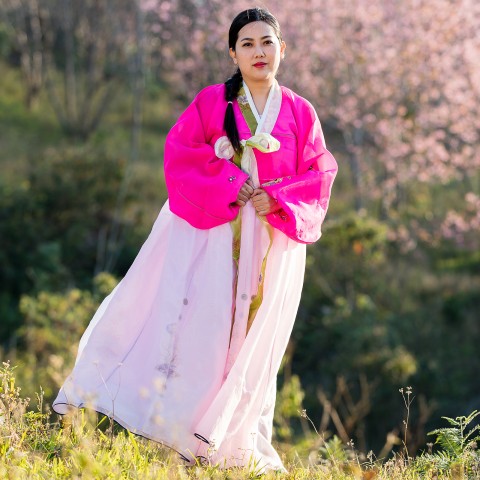
Day 2 in Seoul
광장시장 – “Gwangjang Market” (Google map)
After your first day and night in Seoul, why not kick off your second day at Gwangjang Market? The market is both a shopping street and a street food area, and it’s famous for having a variety of outdoor food courts.
서울타워 – “Seoul Tower” (Google map)
서울타워 (Seoultawo), or “Seoul Tower,” previously known as 남산타워 (namsantawo), is a popular location among local couples because there’s a spot to place love locks. On the other hand, travelers enjoy the tower because it offers a view of the entire city.
명동 – “Myeongdong” (Google map)
명동 (Myeongdong) is a well-known shopping district, featuring many famous Korean cosmetic shops, clothing stores, and some amazing street food. If you’re looking to buy some cosmetics or small gifts for your family or friends, this is the perfect place to do so.
Day 3 in Seoul
인왕산 – “Inwangsan Mountain” (Google map)
인왕산 (Inwangsan), or “Inwang Mountain,” is one of the best places to hike in Seoul, and the entire hike takes about two to three hours. Locals love visiting this place, especially later in the day when they can enjoy the evening light of Seoul. It seems that travelers visit the mountain during the night while locals tend to visit in the evening. If you want to enjoy both, it’s best to start hiking about one or two hours before sunset.
동대문디자인플라자 – “Dongdaemun Design Plaza” (Google map)
The plaza is very easy to visit via subway, and it’s a design-lover’s paradise! The building features a minimalist style of architecture, and if you go inside, you’ll find many shops that sell special items made in Korea. Also, if you visit during Fashion Week, you’ll be able to see many K-pop stars as well as famous Korean fashion models!
강남 – “Gangnam” (Google map)
I’m sure you’ve heard of Gangnam, most likely via the world-famous K-pop star PSY. This is a wonderful place to enjoy shopping and dining, and it’s also a popular meet-up spot for many young locals. You can buy fashionable clothing and cosmetics here, and even visit an underground shopping mall (such as COEX) to find clothes at a cheaper price and enjoy a range of other activities.
봉은사 – “Bongeunsa” (Google map)
Many tourists enjoy visiting temples in Korea. While there are many temples in Seoul, Bongeunsa is one of the most popular among locals and tourists alike. After spending some time in the bustling Gangnam District, why don’t you take a walk around Bongeunsa and enjoy the peace and quiet?

Highly Recommended Places for a 4-7 Day Trip (or Longer)
Do you have a longer trip planned? Great! That will give you time to add a few more memorable locations to your itinerary. Here are a few more must-visit Seoul places that are perfect for more flexible schedules.
한강 – “The Han River” (Google map)
The Han River, or Hangang, is a major hangout area for locals. People can enjoy various activities such as cycling, running, or eating outside with friends. This place is very popular among younger Koreans because you can have food delivered to you while enjoying the outdoors.
이태원 – “Itaewon” (Google map)
If you feel like having a Western dish or have to find places that offer halal food, Itaewon is the place to go. This place is filled with American-style restaurants and bars, as well as plenty of events and parties (including major Halloween parties!). People who live near or often visit this location tend to be very international-minded too, which can make you feel like you’re not even in Korea.
서울 시립 미술관 – “Seoul Museum of Art” (Google map)
Located behind the Decksungung Palace, this museum is known for its large collection of artwork, most of which is from the modern era. Its artwork collection is displayed over three floors, and the museum has its own collection as well as special exhibitions.
롯데월드 타워 – “Lotte World Tower” (Google map)
Lotte World Tower is the tallest observation deck in Korea, soaring in the air at 123 stories (556 meters or 1824 feet) tall. It’s filled with luxury hotels and shopping malls, and there are often firework shows held in the evenings.
진왕사, 북한산 국립공원 – “Jingwansa Temple,” “Bukhansan National Park” (Google map)
What travelers enjoy the most about Seoul is that you can enjoy both city life and nature. Bukhansan National Park is a wonderful hiking destination where traditional buildings are surrounded by hiking trails. There’s also a temple deep in the mountain where you can have an overnight visit and participate in cultural and learning programs.
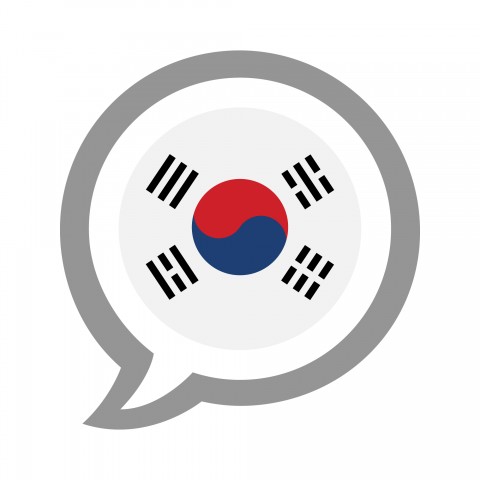
Korean Survival Phrases for Travelers
If you can speak English, you will have no difficulty traveling around Seoul since the majority of young Koreans can speak English, as well as Japanese or Chinese. Many modern restaurants and cafes have menus in English as well. If you want to immerse yourself in the culture and visit Seoul like a local, then you’ll need to learn some basic Korean to get around. Here are the top ten most useful Korean survival phrases for you.
1. “Hello.” – 안녕하세요. (Annyeonghaseyo.)
The Korean language has many different politeness levels, and it’s recommended that you stick to the polite form when speaking with Korean locals. 안녕하세요 (annyeonghaseyo) is a polite way of saying hello to people. You’ll also hear a different greeting from restaurant, hotel, or shop staff: 어서오세요 (eoseooseyo). When you hear this, simply reply with 안녕하세요 (annyeonghaseyo).
Example
[As you enter a cafe]
Staff Member:
어서오세요.
Eoseooseyo.
“Welcome.”
You:
안녕하세요.
Annyeonghaseyo.
“Hello.”
2. “Thank you.” – 감사합니다. (Gamsahamnida.)
This is a polite way to thank someone in Korea. When you say this to a clerk, you’ll likely hear one of two responses:
- 아니예요 (aniyeyo) – “not at all”
- 네 (ne) – “okay”
Example
[As you receive a take-out coffee from an employee]
You:
감사합니다.
Gamsahamnida.
“Thank you.”
Staff Member:
네
Ne.
“Okay.”
3. “Goodbye.” – 안녕히 계세요. (Annyeonghi gyeseyo.) / 안녕히 가세요. (Annyeonghi gaseyo.)
There are two ways to say “goodbye” in Korean: 안녕히 계세요 (annyeonghi gyeseyo) and 안녕히가세요 (annyeonghi gaseyo).
안녕히 가세요 (annyeonghi gaseyo) is used when you say “goodbye” to someone who is leaving. On the other hand, 안녕히 계세요 (annyeonghi gyeseyo) is used when you are the one leaving and the other person is staying.
Example
[As you leave a cafe]
Staff Member:
안녕히가세요.
Annyeonghi gaseyo.
“Goodbye.”
You:
안녕히 계세요.
Annyeonghi gyeseyo.
“Goodbye.”
4. “Sorry.” – 죄송합니다. (Joesonghamnida.)
죄송합니다 (joesonghamnida) is the most commonly used phrase for saying sorry to someone, though you can also say 미안합니다 (mianhamnida); the two phrases have the same meaning and can be used interchangeably. However, if you want to say “sorry” or “excuse me” so you can get through a crowd, you should say one of these two phrases instead:
- 실례합니다 (sillyehamnida) – “excuse me”
- 지나가겠습니다 (jinagagessseumnida) – “passing through”
Example
[When you step on someone’s foot by mistake]
You:
죄송합니다.
Joesonghamnida
“Sorry.”
5. “Sure.” / “Okay.” – 좋아요. (Joayo.)
좋아요 (joayo) means “like something,” but is also used to say “sure” or “okay” in Korean. If someone asks a question and you want to say “sure,” simply say 좋아요 (joayo).
Example
Friend:
오늘 5시에 볼까요?
Oneul daseosie bolkkayo?
“Shall we meet at 5?”
You:
좋아요.
Joayo.
“Sure.”
6. “I don’t/can’t speak Korean.” – 한국말 못해요. (Hangugmal mothaeyo.)
You will have no problem ordering food at a cafe or restaurant since most of the staff (university students) can speak decent English. However, many older restaurants run by locals don’t have an English menu or English-speaking staff. To say that you don’t understand or speak Korean, simply say: 한국말 못해요. (Hangugmal motaeyo.)
Example
[When an old person comes to you and speaks to you in Korean]
You:
죄송합니다. 한국말 못해요.
Joesonghamnida. Hangugmal motaeyo.
“Sorry, I don’t speak Korean.”
7. “Where is the restroom?” – 화장실은 어디에 있어요? (Hwajangsireun eodie isseoyo?)
Let’s break it down:
- 화장실 (hwajangsil) – “toilet”
- 어디에 (eodie) – “where”
- 있어요 (isseoyo) – “is at”
Most restrooms are located near the stairway and the door is always locked for safety reasons. Therefore, it’s always good to ask a staff member directly and get a key (or a key number) so that you can enter.
Example
You:
화장실은 어디에 있어요?
Hwajangsireun eodie isseoyo?
“Where is the bathroom?”
Staff Member:
밖에 있어요. 키 가지고 가세요.
Bakke isseoyo. Ki gajigo gaseyo.
“It’s outside. You need to take a key with you.”
8. “How much is it?” – 이거/저거 얼마예요. (Igeo/Jeogeo eolmayeyo.)
We’ll break this one down, too:
- 이거 (igeo) – “this”
- 저거 (jeogeo) – “that”
- 얼마에요 (eolmayeyo) – “how much”
When you’re at an underground shopping mall, it’s a good idea to carry cash with you since the staff will offer additional discounts for people who purchase items with cash.
Example
You (pointing at a bag):
이거 얼마예요?
Igeo eolmayeyo?
“How much is this?”
Staff Member:
5만원이요.
Omanwoniyo.
“50,000 won.”
9. “I want this.” – 이거 주세요. (Igeo juseyo.)
This phrase is commonly used when shopping or ordering food. When you want to order something from a menu and don’t know how to pronounce it, simply point your finger at its picture and say this phrase.
Example
[You are at an underground shopping mall]
Staff Member:
주문하시겠어요?
Jumunhasigesseoyo?
“What would you like to order?”
You:
이거 주세요.
Igeo juseyo.
“I want this, please.”
10. “Help!” – 도와주세요! (Dowajuseyo!)
도와주세요 (dowajuseyo) is a polite way to ask for someone’s help in Korean. On the other hand, 살려주세요! (Sallyeojuseyo!) is a stronger phrase used to call for help. It means “Please save (my life),” so if you say this, people will instantly understand that immediate action (such as calling 112) is required.
Example
누구 없어요? 도와 주세요.
Nugu eopsseoyo? Dowa juseyo.
“Somebody, help!”
There are many emergency assistance services available in Korea for foreigners. Remember to keep these emergency numbers with you at all times in case of an emergency.
- Police: 112
- Fire and ambulance: 119
- Medical emergencies: 129
- Foreigner community service: 02-798-7529
- Seoul help office: 02-3140-1903
- International SOS Korea LTD: 02-3150-1700
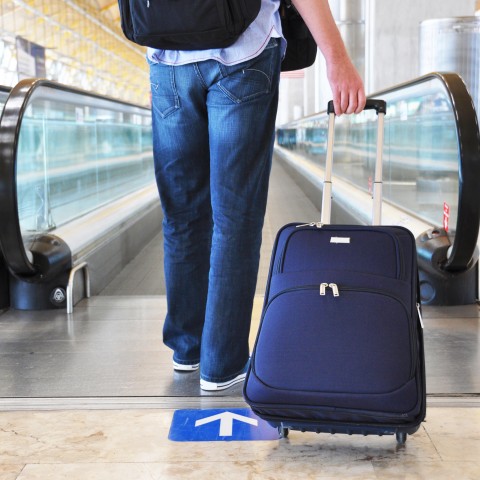
Want to Learn More Survival Phrases? No Problem!
Here are more useful pages where you can learn additional Korean phrases before traveling to Korea!
- Survival Phrases: Don’t waste any time! Get the most language knowledge in the shortest amount of time with these survival phrases from KoreanClass101.
- Top 30 Travel Phrases You Should Know
- Travel
- Don’t Travel Without Knowing These Top 10 Verbs
- The Top 10 Ways to Prepare for Travel in Korean
- The Amazing Race Comes to Korea: How Will You Travel?
- Travel & Language Go Together, So We’ve Partnered With British Airways
- Choosing Travel Insurance in South Korea
You can also create an account on KoreanClass101 to learn even more essential Korean phrases and how to use them.
Before you go, we’re curious: Have you ever visited Korea, or will this be your first time? If you’ve been before, share your experience with us in the comments below!

Everything You Should Know About Konglish & Korean Loanwords

There are three main word classes in the Korean language: pure Korean words, Sino-Korean words, and foreign words. The foreign words can be broken down further into loanwords and Konglish.
Konglish refers to words taken directly from the English language and used in Korean. These words are often used with a different meaning than that of the original word, or have a Koreanized pronunciation. Examples include:
- 바나나 (banana) – “banana”
- 뉴욕 (nyeuyok) – “New York”
In this article, you’ll learn more about Konglish along with other commonly used English words in the Korean language. Let’s get started!
 Table of Contents
Table of Contents
- Introduction to Konglish
- A Brief List of Konglish Words
- List of Loanwords
- English Words Derived from Korean
- How KoreanClass101.com Can Help With Your Korean Learning
Introduction to Konglish
Koreans use many English words every day, but foreigners struggle to understand 콩글리시 (Konglish) because the original meanings of the English words are altered and translated differently in Korean. Many English speakers are puzzled by Konglish because the words do sound English, but they do not exist in the English language and have different meanings.
Here are some examples of Konglish:
- 리모콘 (rimokon) – “remote control”
- 사인 (sain) – “signature”
- 아파트 (apateu) – “apartment”
- 슈퍼 (syupeo) – “supermarket’
- 셀프 (selpeu) – “self-service”

A Brief List of Konglish Words
Now that you’ve learned what Konglish is, you’re ready to dive in! In this section, we’ll introduce the most commonly used Konglish words in Korea.
1) 레포츠 (reportseu) – “leisure” and “sports”
- English meaning: Combination of “leisure” and “sports”
- Korean meaning: The sports that are considered luxurious in Korea
Example
레포츠의 종류는 많아요.
Repocheuui jonglyuneun mannayo.
“There are many kinds of leisure activities.”
예를 들면 승마, 골프, 산악자전거, 카누, 패러글라이딩 등등이 있어요.
Yereul deulmyeon seungma, golpeu, sanakjajeongeo, kanu, paereogeullaiding deungdeungi isseoyo.
“Examples include horse riding, golfing, mountain biking, canoeing, paragliding, and so on.”
2) 리조텔 (lijotel) – “resort” and “hotel”
- English meaning: Combination of “resort” and “hotel”
- Korean meaning: Resort and hotel
Example
부산에 괜찮은 리조텔 찾아보자.
Busane gwaenchaneun rijotel chajaboja.
“Let’s find a good resortel in Busan.”
설악산 리조텔 특가
seoraksana rijotel teukga
“Seoraksan Resortel Deals”
3) 셀카 (selka) – “self” and “camera selfie”
- English meaning: Selfie
- Korean meaning: To take a picture of yourself
Note that selka came from “self” and “camera.”
Example
야, 셀카 같이 찍자!
Ya, selka gat-i jjigja!
“Hey, let’s take a selfie!”
4) 매스컴 (maseukom) – “mass media”
- English meaning: “Mass communication” and “mass media”
- Korean meaning: Mass communication
Example
매스컴이 사회에 미치는 영향
maeseukeomi sahoee michineun yeonghyang
“the impact of media on society”
5) 아르바이트 (areubaiteu) – “part-time job”
- Meaning: “Job” and “work”
- Korean meaning: A part-time job, such as at a supermarket or restaurant
Note that areubaiteu comes from the German word “Arbeit,” and is influenced by the Japanese derivative of this word (arubaito).
Example
어디가?
Eodiga?
“Where are you going?”
나 7시부터 아르바이트 있어서 가야돼.
Na ilgopsibuteo aleubaiteu iss-eoseo gayadwae.
“I need to go because I have work from seven p.m.”
6) 호치키스 (hochikiseu) – “stapler”
E.H. Hotchkiss is the name of a stapler-making company, which is why Koreans call staplers 호치키스 (hochikiseu), or “hotchkiss.”
Example
호치키스 사고 싶어요.
Hochikiseu sago sipeoyo.
“I want to buy a stapler.”
7) 아이쇼핑 (aishopping) – “window shopping”
“Eye shopping” is the Koreanized word for “window shopping,” and these two words have the same meaning.
Example
쇼핑하고 싶은데 돈이 없네.
Syopinghago sipeun de doni eomne.
“I want to go shopping, but I’m broke.”
그럼 아이쇼핑하러 가자!
Geureom aisyopinghareo gaja!
“Let’s go window shopping then!”
8) 콘센트 (konsenteu) – “electrical outlet”
- English meaning: ‘Consent’ is a Konglish word referring to an outlet/socket/power point.
- Korean meaning: Electrical outlet
Koreans also call electrical outlets 돼지코 (dwaejiko), meaning “pig nose,” because outlets resemble the nose of a pig.
Example
호주 콘센트는 한국이랑 다르지?
Hoju konsenteuneun hangugirang dareuji?
“The Australian outlet is different from the Korean one, right?”
응 달라.
Eung dalla.
“Yes, it’s different.”
9) 노트북 (noteubuk) – “laptop”
- English meaning: “Laptop”
- Korean meaning: It is a combination of the words “note” and “book.” In Korea, the word “notebook” refers to a “laptop.”
Example
노트북 갖다줄래?
Notubuk gatdajullae?
“Can you pass me my laptop?”
자 여기.
Ja yeogi.
“Sure, here you go.”
아니, 공책말고, 노트북!
Ani, gongchaekmalgo, noteubuk!
“No, I meant a notebook (laptop), not a notebook!”
아. 응 미안.
A. Eung mian.
“Ah, sorry.”
Other Konglish Words
- 헬스 (helseu) – “health club” / “fitness center”
- 클래식 (keullaesik) – “classical music”
- 탤런트 (taellenteu) – “TV actor”
- 컨닝 (cunning) – “cheating”
- 샤프 (syapeu) – “mechanical pencil”
- 핸들 (handeul) – “steering wheel”
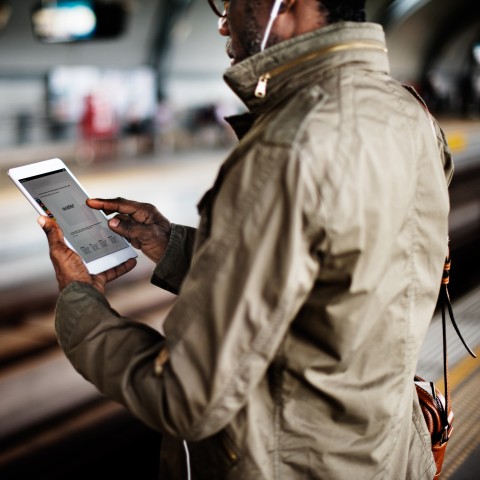
List of Loanwords
In addition to Konglish, there are several English loanwords in the Korean language. These are words taken directly from English without translation; they mean the same thing as their English counterparts, but have Koreanized spelling and pronunciation.
| Loanword | Romanization | Meaning |
| 사우나 | sauna | sauna |
| 토크쇼 | tokeusyo | talk show |
| 블로그 | beullogeu | blog |
| 블로거 | beullogeo | blogger |
| 카메라 | kamera | camera |
| 아이스크림 | aiseukeurim | ice cream |
| 키스 | kiseu | kiss |
| 오렌지 | orenji | orange |
| 주스 | juseu | juice |
| 초콜릿 | chokolet | chocolate |
| 케이크 | keikeu | cake |
| 훌라후프 | hulaheupeu | hula hoop |
| 라디오 | radio | radio |
| 게임 | geim | game |
| 넥타이 | nektai | necktie |
| 노트 | noteu | note |
| 뉴스 | nyuseu | news |
| 달러 | dalleo | dollar |
| 메뉴 | menyu | menu |
| 카드 | kadeu | card |
| 쇼핑백 | syopingbaek | shopping bag |
| 버스 | beoseu | bus |
| 샤워 | syaweo | shower |
| 비디오 | bidio | video |
| 스트레스 | seuteureseu | stress |
| 스포츠 | seupocheu | sports |
While many English loanwords in Korean relate to food, sports, and shopping, there is also a wealth of loanwords related to technology. To learn more about these words, visit the following pages on KoreanClass101.com:

English Words Derived from Korean
While there are numerous English words used in Korean, this language and culture exchange goes both ways! Several Korean words have entered the English language and are now used on a daily basis in English-speaking countries. Here are just a few examples.
1) 먹방 (meokbang)
A meokbang is an online broadcast in which a host consumes large quantities of food while interacting with the audience. The host tries a variety of foods, such as pizza or spicy noodles, in front of a camera.
Example
라면 18봉지 먹방
ramyeon sippalbongji meokbang
“18 bags of ramen meokbang”
치즈 돈까스 20개와 크림스프 먹방
Chijeu donkkaseu isipgaewa keurimseupeu meokbang
“20 cheese cutlet and cream soup meokbang”
2) 재벌 (jaebeol)
Chaebol refers to a conglomerate business entity. This word appears a lot in Korean dramas.
Example
저기 있는 남자 재벌이래!
Jeogi itsneun namja jaebeol-ilae!
“The man over there is a chaebol!”
3) 비빔밥 (bibimbap)
You may have heard of—or even tried—this dish already. Bibimbap means “mixed rice,” and there are several varieties of this dish, including some vegetarian options.
The most popular type is 돌솥비빔밥 (dolsotbibimbap), which means “mixed rice in a (hot) stone pot.” The rice is placed inside a stone pot along with vegetables, meats, and egg. The pot is then placed over a fire so that the food is sizzling hot when served. Most service staff will warn you that the pot is very hot and should not be touched until it cools.
Example
비빔밥 종류가 너무 많아서 못 고르겠어!
Bibimbap jongnyuga neomu manaseo mot goreugesseo!
“There are so many types of bibimbap, so I can’t choose!”
돌솥비빔밥이 제일 맛있어. 먹어봐.
Dolsotbibimbabi jeil masisseo. Meogeobwa.
“Dolsot Bibimbap is the best. Try it. ”
4) 태권도 (taegwondo)
Taekwondo is a Korean martial art that emphasizes head-height kicks, jumping spinning kicks, and various kicking techniques for above the waist. Taekwondo practitioners wear a uniform called 도복 (dobok), which is a white-colored uniform with a belt tied around the waist. There are different-colored belts that correspond to one’s skill level.
Example
태권도 시작한지 얼마 되지 않은 사람은 하얀 벨트를 매요.
Taegwondo sijakhanji eolma doeji anneun sarameun hayan belteuleul maeyo.
“People who have just started Taekwondo wear white belts.”
태권도를 오래한 사람은 검은 벨트를 매요.
Taegwondoreul oraehan sarameun geomeun belteureul maeyo.
“People who are experienced in Taekwondo wear black belts.”
5) 불고기 (bulgogi)
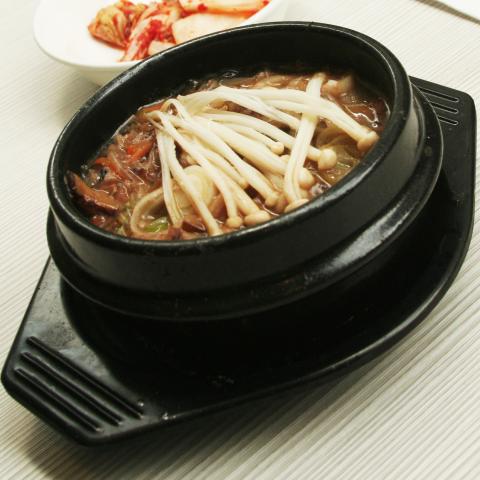
Bulgogi means “fire meat,” and it refers to a dish of marinated slices of beef grilled on a barbecue with different kinds of vegetables. Sirloin, rib eye, and brisket are the most common ingredients for this dish.
Example
외국인이 좋아하는 한식은 무엇이 있을까?
Oegugini joahaneun hansigeun mueosi isseulkka?
“What Korean foods do foreigners like?”
고기 좋아한다면 불고기 추천!
Gogi joahandamyeon bulgogi chucheon!
“I recommend Bulgogi if they like meat!”
6) 소주 (soju)
Soju is a Korean alcoholic beverage that comes in a green glass bottle. This is the most popular alcoholic drink in Korean restaurants and it goes well with grilled meat. In recent years, the company that produces Soju beverages has released a variety of flavors—such as fruit-flavored Soju—to meet consumers’ needs.
Example
소주에도 종류가 많다는거 알고 있었나요?
Sojuedo jongnyuga mantaneungeo algo isseonnayo?
“Did you know that there are many types of Soju?”
네, 최근에 과일맛 소주도 나왔더라구요.
Ne, choegeune gwailmat sojudo nawatdeoraguyo.
“Yes, there was a fruit-flavored Soju recently.”
7) 갈비 (galbi)
갈비 (galbi), which means “ribs” in Korean, is one of the most famous Korean dishes. It’s usually made with beef short ribs.
Example
갈비 1인분 주세요.
Galbi irinbun juseyo.
“I’d like to order one portion of galbi, please.”
8) 한복 (hanbok)
Hanbok is a traditional Korean clothing item that Koreans wear on special occasions such as Harvest Day, New Year’s Day, and so on.
Example
한복 너무 이쁘다. 나도 입어보고 싶어.
Hanbok neomu ippeuda. Nado ibeobogo sipeo.
“Hanbok is so pretty. I want to wear it too.”
그래? 광화문 가자! 거기서 한복 렌탈해주는곳 많아!
Geurae? Gwanghwamun gaja! Geogiseo hanbok rentalhaejuneungot manna!
“Yeah? Let’s go to Gwanghwamun then! There are many places where you can rent Hanbok!”
Other English Words Derived from Korean
- 고추장 (gochujang) – “spicy pepper paste”
- 막걸리 (makgeolri) – “rice wine”
- 합기도 (hapgido) – “Korean martial art”
- 한글 (hangeul) – “Korean language”
- 김밥 (gimbap) – “Korean seaweed rice roll”
How KoreanClass101.com Can Help With Your Korean Learning
In summary, we’ve explained the definition of “Konglish” and introduced you to some Konglish examples and loanwords. Which of these Konglish words is your favorite? Let us know in the comments! We look forward to hearing from you.
You can continue learning about Konglish and the Korean language on the following pages:
- Korean + English = Konglish! Can You Guess These Words?
- Learn the Korean Alphabet, Hangul, from A to Z!
And of course, KoreanClass101.com provides so much more for our learners. From free resources and vocabulary lists to video and audio lessons for learners at every level, there’s so much in store for you. Create your free lifetime account and start learning Korean like never before with our fun and effective materials!

Motivational and Inspirational Korean Quotes

We can apply quotes to so many different aspects of our lives. For example, some people read inspirational quotes to keep themselves motivated; others read them to feel better about themselves or to move forward after a hardship.
But did you know that the benefits of reading quotes don’t end there? You can also expedite your language learning by studying popular quotes in that language.
In this article, we’ll introduce you to many inspirational Korean quotes on various topics, from love to language learning (and everything in-between). We’ve included a mix of original Korean quotes and popular English quotes translated into Korean. Enjoy!
 Table of Contents
Table of Contents
- Quotes About Success
- Quotes About Life
- Quotes About Time
- Quotes About Love
- Quotes About Family
- Quotes About Friendship
- Quotes About Language Learning
- How KoreanClass101 Can Help You Improve Your Korean Skills
1. Quotes About Success
We’ll start with a few Korean quotes about success. How many of these are familiar to you in English?
꿈이 있다면 절대 포기하지 마라.
Kkumi itdamyeon jeoldae pogihaji mara.
“If you have a dream, never give up.”
실패는 성공의 어머니이다.
Silpaeneun seonggongui eomeoniida.
“Failure is the mother of success.”
잘 될 거예요.
Jal doel geoyeyo.
“Everything will be okay.”
너는 무엇이든 할 수 있어.
Neoneun mueosideun hal su isseo.
“You can do anything.”
고생 끝에 낙이 온다.
Gosaeng kkeute nagi onda.
“At the end of hardship comes happiness.”
항상 믿음을 유지하자.
Hangsang mideumeul yujihaja.
“Always keep the faith.”
네 꿈을 펼쳐라.
“Follow your dreams.”
나는 내 인생에서 실패에 실패를 거듭했다. 그런데 그것이 바로 내가 성공하는 이유이다. – 마이클 조던
Naneun nae insaengeseo silpaee silpaereul geodeupaetda. geureonde geugeosi baro naega seonggonghaneun iyuida. – maikeul jodeon
“I have failed over and over again in my life. And that is why I succeed.” – Michael Jordan
인생은 과감한 모험이던가, 아니면 아무 것도 아니다. – 헬렌 켈러
Insaengeun gwagamhan moheomideonga, animyeon amu geotdo anida. – hellen kelleo
“Life is either a daring adventure or nothing.” – Helen Keller
꿈을 추구하는 용기가 있다면 우리의 모든 꿈을 이룰 수 있다. – 월트 디즈니
Kkumeul chuguhaneun yonggiga itdamyeon uriui modeun kkumeul irul su itda. – wolteu dijeuni
“All our dreams can come true if we have the courage to pursue them.” – Walt Disney
인생에서 가장 나쁜 죄악은 옳은 것을 알면서도 행동하지 않는 것이다. – 마틴 루터 킹
Insaengeseo gajang nappeun joeageun oreun geoseul almyeonseodo haengdonghaji anneun geosida. – matin luteo king
“Perhaps the worst sin in life is knowing right and not doing it.” – Martin Luther King., Jr.
운이란 준비가 기회를 만나는 것이다. – 얼 나이팅게일
Uniran junbiga gihoereul mannaneun geosida. – eol naitinggeil
“Luck is when preparedness meets opportunity.” – Earl Nightingale
- → Check out the “Top 11 Quotes About Success” vocabulary list on KoreanClass101 to be inspired and stay motivated!

Speaking with elders is a great way to get inspired, too.
2. Quotes About Life
Life is a great mystery that people have long been trying to unravel. Here are Korean quotes on life to give you some perspective and make you think.
우리는 행복한 줄 모르기에 행복할 줄 모른다. – 정순철
Urineun haengbokan jul moreugie haengbokal jul moreunda. – eongsuncheol
“We don’t know how to be happy because we don’t know we are happy.”
성공한 사람을 찾아서 따라하지 말고 항상 자기 생각대로 행동하고 표현하며 스스로에게 믿음을 가져라.
Seonggonghan sarameul chajaseo ttarahaji malgo hangsang jagi saenggakdaero haengdonghago pyohyeonhamyeo seuseuroege mideumeul gajyeora.
“Always be yourself, express yourself, have faith in yourself. Do not go out and look for a successful personality and duplicate it.”
고통이 없이는 얻는 것도 없다.
Gotongi eopsineun eonneun geotdo eopda.
“No pain no gain.”
인생은 모험이거나 아무것도 아니거나.
Insaengeun moheomigeona amugeotdo anigeona.
“Life is a venture or nothing.”
보는 것이 믿는 것이다.
Boneun geosi minneun geosida.
“Seeing is believing.”
인생은 모험이다.
Insaengeun mohomida.
“Life is an adventure.”
웃음은 최고의 명약이다.
Useumeun choegoui myeongyagida.
“Laughter is the best medicine.”
길을 아는 것과 그 길을 걷는 것은 분명히 다르다.
Gireul aneun geotgwa geu gireul geonneun geoseun bunmyeonghi dareuda.
“Knowing the road and walking the road are clearly different.”
오늘 걷지 않으면 내일 뛰어야 한다.
Oneul geotji aneumyeon naeil ttwieoya handa.
“If you don’t walk today, you must run tomorrow.”
너의 기분은 너의 태도가 되면 안된다.
Neoui gibuneun neoui taedoga doemyeon andoenda.
“Your mood should not be your attitude.”
나 자신에게 더욱 집중하라.
Na jasinege deouk jipjunghara.
“Focus more on yourself.”
언제나 나를 1순위에 두어라.
Eonjena nareul ilsunwie dueora.
“Always put myself first.”
다른 이의 삶에 한눈팔며 살기엔 내 인생이 너무 소중하다.
Dareun iui sarame hannunpalmyeo salgien nae insaengi neomu sojunghada.
“My life is too precious to live at a glance in the lives of others.”
3. Quotes About Time
Here are a few Korean quotes about life that focus specifically on the concept of time.
jumari jjalge neukkyeojineun iyu
“The reason why weekends feel too short”
평일: 월화수목금
Pyeongil: wolhwasumokgeum
Weekdays: Mon, Tues, Weds, Thurs, and Fri
주말: 토일
Jumal: toil
“Weekend: Sat and Sun”
실제로 짧음.
Siljero jjalbeum.
“It is short indeed.”
—
시간은 금이다.
Siganeun geumida.
“Time is gold.”
로마는 하루 아침에 이루어진 것이 아니다.
Romaneun haru achime irueojin geosi anida.
“Rome wasn’t built in a day.”
- → You can learn more words related to time in our “Talking About Time in Korean” vocabulary list!

Reading Korean quotes about love will put butterflies in your stomach.
4. Quotes About Love
Are you madly in love with someone? Or maybe you’re a hopeless romantic? Either way, you’re sure to enjoy these Korean quotes on love!
내가 웃는 이유는 너야.
Naega urneun iyuneun neoya.
“You are the reason I am smiling.”
내 마음이 들리니.
Nae maeumi deullini.
“Can you hear my heart?”
내 손 잡아줄래?
Nae son jaba jullae?
“Can you hold my hand?”
세상 모두가 변해도 너만을 사랑해.
Sesang moduga byeonhaedo neomaneul saranghae.
“Even if the whole world changes, I will only love you.”
자신을 사랑하는 법을 아는 것이 가장 위대한 사랑이다.
Jasineul saranghaneun beobeul aneun geosi gajang widaehan sarangida.
“Learning to love yourself is the greatest love of all.”
사랑 받고 싶다면 사랑하라, 그리고 사랑스럽게 행동하라. – 벤자민 프랭클린
Sarang batgo sipdamyeon saranghara, geurigo sarangseureopge haengdonghara. – benjamin peuraengkeullin
“If you would be loved, love and be lovable.” – Benjamin Franklin
우리는 오로지 사랑을 함으로써 사랑을 배울 수 있다. – 아이리스 머독
Urineun oroji sarangeul hameurosseo sarangeul baeul su itda. – airiseu meodok
“We can only learn to love by loving.” – Iris Murdoch
사랑하는 것은 천국을 살짝 엿보는 것이다. – 카렌 선드
Saranghaneun geoseun cheongugeul saljjang yeotboneun geosida. – karen seondeu
“To love is to receive a glimpse of heaven.” – Karen Sunde
사랑은 눈으로 보지 않고 마음으로 보는 거지. – 윌리엄 셰익스피어
Sarangeun nuneuro boji anko maeumeuro boneun geoji. – willieom syeikseupieo
“Love looks not with the eyes, but with the mind.” – William Shakespeare
눈에서 멀어지면, 마음에서도 멀어진다.
Nuneseo meoreojimyeon, maeumeseodo meoreojinda.
“Out of sight, out of mind.”
- → Want to check out more quotes in Korean? See the “Korean Quotes About Love” and “Korean Breakup Quotes” vocabulary lists on KoreanClass101.com!

There are many inspirational Korean quotes in films.
5. Quotes About Family
What does family mean to you? Here are a few Korean quotes about family to read while you’re thinking!
상욱 씨에게 ‘가족’은 어떤 의미예요?
Sangung ssiege ‘gajok’eun eotteon uimiyeyo?
“What does ‘family’ mean to you, Sanguk?”
저에게 가족은 ‘영어’ 같아요.
Jeoege gajogeun ‘yeongeo’ gatayo.
“As for me, family is like ‘English’.”
왜요?
Waeyo?
“Why?”
마음에 있는 게 표현이 안돼.
Maeume inneun ge pyohyeoni andwae.
“I can’t express how I feel properly.”
– 하상욱
(– Hasanguk)
– Ha Sanguk
—
가족은 자연의 걸작 중 하나이다.
Gajogeun jayeonui geoljang jung hanaida.
“The family is one of nature’s masterpieces.”
형제는 자연이 준 친구이다.
Hyeongjeneun jayeoni jun chinguida.
“A brother is a friend given by nature.”
피는 물보다 진하다.
Pineun mulboda jinhada.
“Blood is thicker than water.”
나쁜 아내를 가진 자는 재물 속에서도 가난하다.
Nappeun anaereul gajin janeun jaemul sogeseodo gananhada.
“Who has a bad wife is poor in the midst of riches.”
부모의 의심이 자녀를 교활하게 만든다.
Bumoui uisimi janyeoreul gyohwalhage mandeunda.
“A suspicious parent makes artful children.”
가지 많은 나무에 바람 잘 날 없다. ( = 아이가 많은 집안에서 휴식은 없다. )
Gaji maneun namue baram jal nal eopda. ( = aiga maneun jibaneseo hyusigeun eopda. )
“There is no rest for a family with many children.”
피는 못 속인다.
Pineun mot soginda.
“Blood will tell.”
사방을 둘러봐도 집이 최고다.
Sabangeul dulleobwado jibi choegoda.
“East, west, home is best.”
내 집만한 곳은 어디에도 없다.
Nae jimmanhan goseun eodiedo eopda.
“There is no place like home.”
- → Check out our vocabulary lists “Top 10 Quotes About Family” and “Must-Know Terms for Family Members” on KoreanClass101.com!

6. Quotes About Friendship
Friends are some of the most important people in our lives, but how exactly do we define friendship? Check out these Korean quotes about friendship to gain some perspective!
새로 사귄 친구는 나를 설레게 하지만오래된 친구처럼 내 아프고 쓰린 눈물을 닦아줄 수는 없을 것이다.
Saero sagwin chinguneun nareul seollege hajiman oraedoen chingucheoreom nae apeugo sseurin nunmureul dakkajul suneun eopseul geosida.
“New friends make me excited, but they will not be able to wipe away my sore and bitter tears like an old friend.”
돈으로 우정을 살 순 없다.
Doneuro ujeongeul sal sun eopda.
“You can’t buy friendship with money.”
어둠 속에서 친구와 함께 걷는 것이 밝은 곳을 혼자 걷는 것보다 낫다.
Eodum sogeseo chinguwa hamkke geonneun geosi balgeun goseul honja geonneun geotboda natda.
“Walking with a friend in the dark is better than walking alone in the light.”
진정한 친구는 세상 모두가 나를 떠날 때 내게로 오는 사람이다.
Jinjeonghan chinguneun sesang moduga nareul tteonal ttae naegero oneun saramida.
“A real friend is one who walks in when the rest of the world walks out.”
네 이웃을 네 몸처럼 사랑하여라.
Ne iuseul ne momcheoreom saranghayeora.
“Love your neighbor as yourself.”
성공은 친구를 만들고, 역경은 친구를 시험한다.
Seonggongeun chingureul mandeulgo, yeokgyeongeun chingureul siheomhanda.
“Prosperity makes friends, adversity tries them.”
친구라면 친구의 결점을 참고 견뎌야 한다.
Chinguramyeon chinguui gyeoljeomeul chamgo gyeondyeoya handa.
“A friend should bear his friend’s infirmities.”
누구에게나 친구는 어느 누구에게도 친구가 아니다.
Nuguegena chinguneun eoneu nuguegedo chinguga anida.
“A friend to all is a friend to none.”
친구에게 충고할 때는 즐겁게 하지 말고, 도움이 되도록 하라.
Chinguege chunggohal ttaeneun jeulgeopge haji malgo, doumi doedorong hara.
“In giving advice, seek to help, not to please, your friend.”
- → Want more Korean quotes for friends? Go to our “Top 10 Quotes About Friendship” vocabulary list!
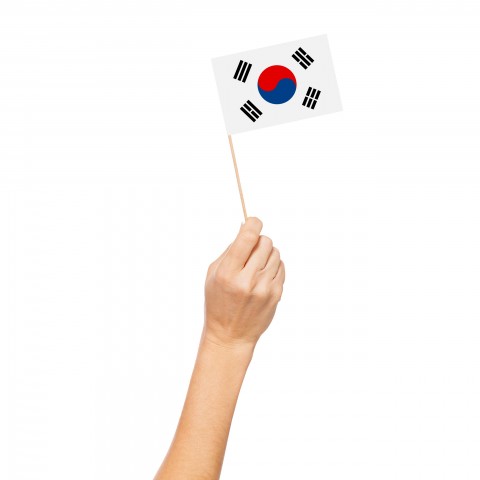
7. Quotes About Language Learning
Our final category in this Korean quotes list is words of wisdom you can apply to your language learning.
멈추지 말고 계속 해나가기만 한다면 늦어도 상관없다.
Meomchuji malgo gyesong haenagagiman handamyeon neujeodo sanggwaneopda.
“It does not matter how slowly you go as long as you do not stop.”
뛰기 전에 걷는 것을 배워라.
Ttwigi jeone geonneun geoseul baewora.
“Learn to walk before you run.”
모험이 없으면, 아무 것도 얻는 것이 없다.
Moheomi eopseumyeon, amu geotdo eonneun geosi eopda.
“Nothing ventured, nothing gained.”
학문에는 왕도는 없다.
Hangmuneneun wangdoneun eopda.
“There is no royal road to learning.”
새로운 언어는 새로운 삶이다.
Saeroun eoneoneun saeroun salmida.
“A new language is a new life.”
- → Do you need more advice or inspiration? Study our vocabulary list “Top 10 Korean Quotes About Language Learning” when you have time!
8. How KoreanClass101 Can Help You Improve Your Korean Skills
In summary, we’ve introduced many quotes on a variety of topics. By now, we’re sure you’re feeling more inspired! Do you know any inspirational quotes in your language? Leave a comment below to share them with us.
KoreanClass101 provides a number of free study materials for Korean learners. If you want to learn Korean in detail or advance your Korean language skills with the help of Korean instructors, you can create your account today. You’ll be able to access all of our content and study at your convenience!
Good luck with your Korean studies!













